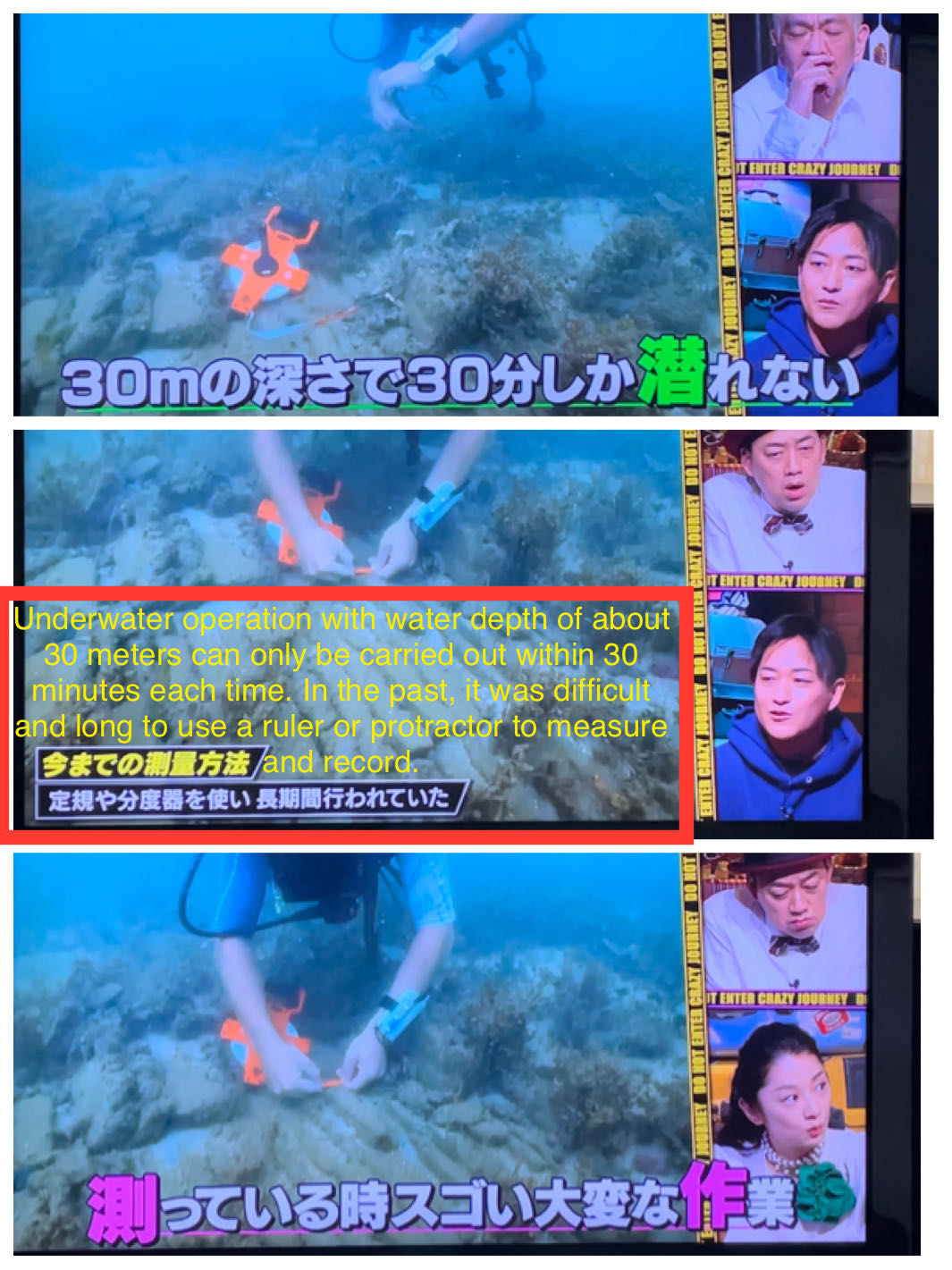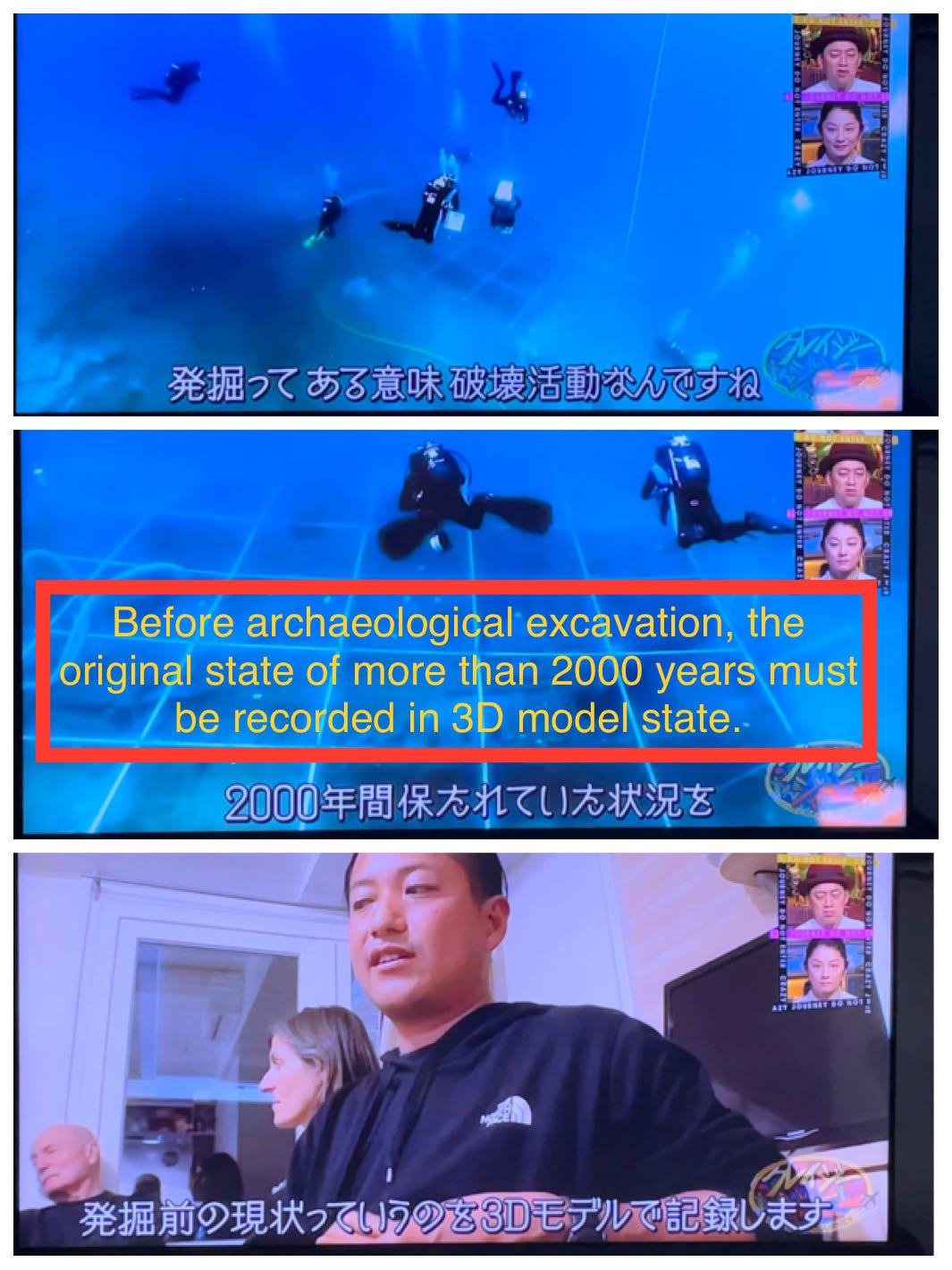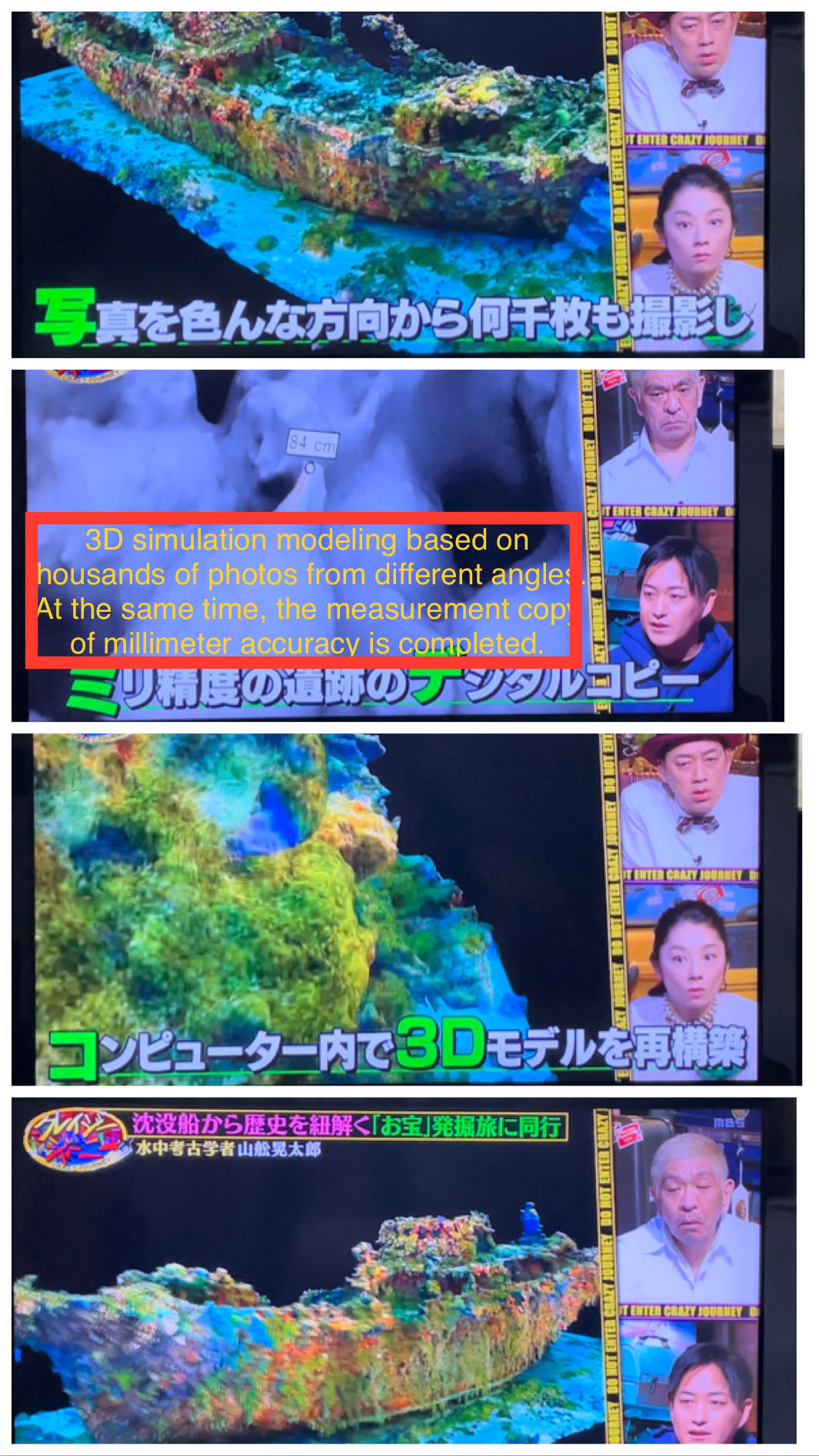
The special TV series about underwater archaeology broadcasted yesterday is very interesting. By introducing the latest 3D simulation and modeling tools, archaeologists can make the most effective excavation plan and make records with millimetre accuracy while easing their physical workload. In this way, they preserve human historical heritage.
One doctor of the archaeologists emphasizes, the excavation work is also a kind of destructive activity in a sense. The original feature of the heritage maintained during the long period of more than 2000 years must be accurately and faithfully recorded in the state of 3D models. The heritage of mankind should also be in form of digital asset that can be faithfully CG-restored and handed over to descendant.

The stones of those hills may be used to polish gems.
If there is no millimeter-accurate 3D model to record the data in advance, how can we accurately restore the original spatial position, angle and distance of the archaeological site by memory and feeling once it has been touched?
In the same way, if the editing and modification of clothing pattern has no identification of the design position and shape in 3D state in advance, and no corresponding operation, how can we achieve the faithful 3D restoration effect by directly making the pattern in 2DCad software by virtue of memory and feeling?
While it has become common sense for other industries to use 3D models as the starting point for process, the fashion industry must keep up with the times.
The change of concept is the first priority!
The benchmark for the value evaluation of pattern data assets in the future will become whether they come from digital 3D garment models instead of 2D CAD software.
24th Feb,2023
